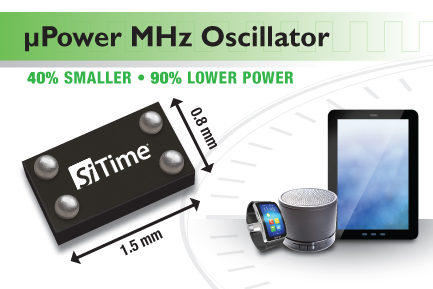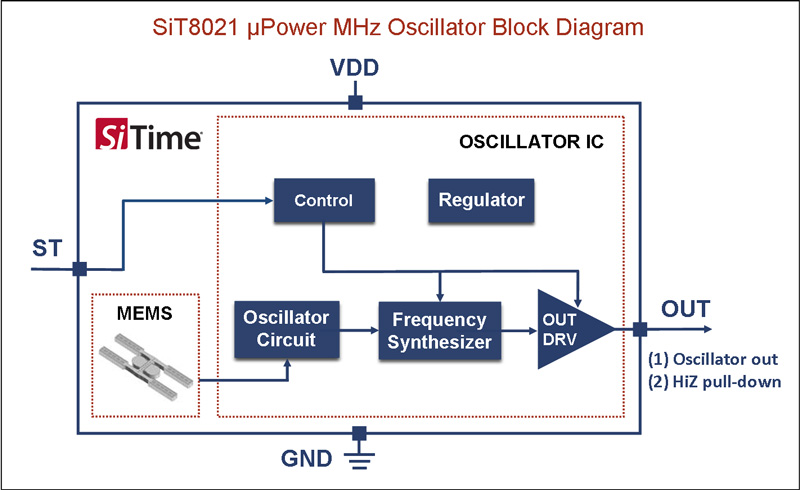Shattering the limits of power, size and weight
With this week’s introduction of the industry’s smallest and lowest power MHz oscillators designed for the wearable, IoT and mobile markets, MEMS-based timing has once again shattered the limitations of quartz. The SiT8021 oscillator is the first device in our new family of µPower MHz oscillators which offer dramatic improvements over legacy quartz oscillators:
- 90% lower power – extends battery life
- 40% smaller – enables smaller products
- 70% lighter – enables lighter wearables

These are benefits that offer unique value for smart watches, fitness bands and health monitoring devices, tablets, smart phones, wireless IP cameras, portable audio and accessories. Within these products, the SiT8021 can provide a low frequency reference for several functions including a low-power MCU or SoC, audio interface and glue logic.
Designers of these battery-powered products face a challenge in finding a timing reference that is both tiny and low power. Prior to MEMS technology, electronic devices used quartz crystal-based oscillators. But with quartz resonators, the lower the frequency, the larger the resonator. MEMS do not have this constraint.
How is micro power achieved?
The SiT8021 draws only 100 µA of current. This is achieved through innovations in both the MEMS and analog technologies employed in our µPower products. Like SiTime’s µPower 32 kHz SiT15xx solutions, the 1-26 MHz SiT8021 uses a 524-kHz resonator based on SiTime’s groundbreaking TempFlat MEMS™ technology. This provides several benefits. First, because the SiT8021 uses a kHz reference instead of a MHz reference, it consumes much less power. In addition, there is no need for on-chip compensation circuitry on the oscillator die because the native frequency stability of TempFlat MEMS™ is adequate for 100 PPM oscillators. This reduces both the power consumption and the die size. The frequency synthesizer within the oscillator utilizes a highly optimized phased lock loop (PLL) to attain this high performance at MHz frequencies.

How is ultra small size achieved?
MEMS oscillators are inherently very small.The typical size of SiTime’s MEMS resonator die is only 0.4 x 0.4 mm and it has a mass that is 1/3000th the mass of a typical quartz crystal resonator. MEMS resonators are manufactured using standard CMOS equipment and are hermetically sealed within a silicon die. Because our resonators are fully encapsulated in silicon, they can be packaged using modern IC packaging technologies such as WL-CSP (wafer-level chip scale packaging) that yield the smallest packages. In this configuration, the MEMS die is mounted on the oscillator die, and the latter defines the footprint dimensions of the device, i.e. 1.5 x 0.8 mm which is 40% smaller than any quartz oscillator on the market. At this size, the SiT8021 is not only the industry’s smallest oscillator in terms of footprint, but it’s 45% thinner with a height of 0.55 mm. This allows system designers to be flexible with their board layout and creative in achieving smaller form factors. And at 1.28 mg, the SiT8021 is 70% lighter than the lightest quartz-based oscillator, giving designers a new way to reduce the overall product weight.
By pushing the boundaries in size, weight and power reductions, the SiT8021 continues SiTime's history of innovation and industry firsts. We’re excited to see the new generation of products our customers will develop as they adopt of our new µPower oscillators and design products that were previously not possible.